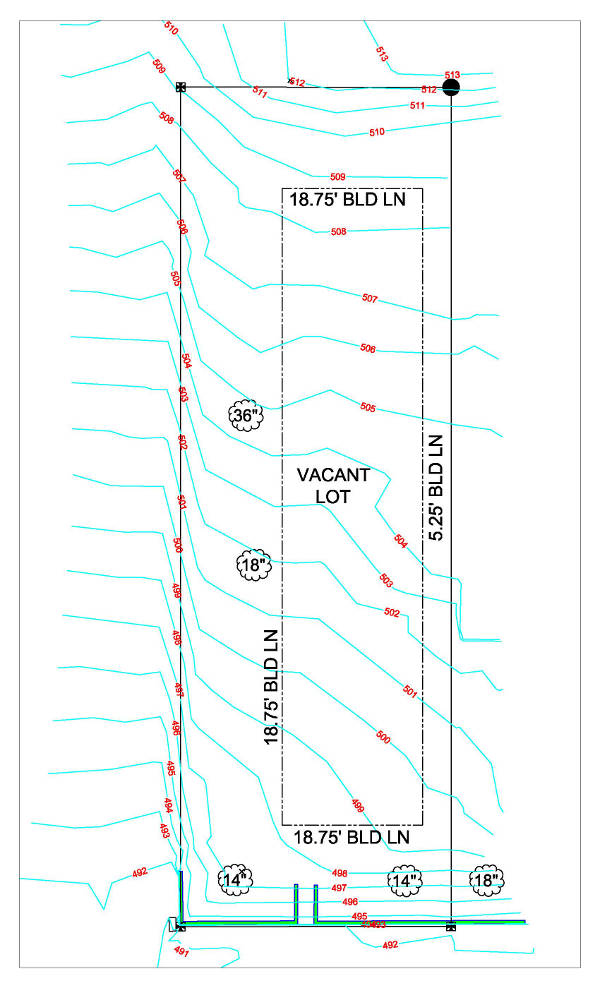A topographical survey shows a 3-D depiction of land on a 2-D product. There are many reasons as to why this information can assist a property owner. Here are a few of the main reasons:
- To build on. If you have a vacant piece of property, the topographic survey can show you the contours, or the lay of the land, regarding elevation change on the lot. You can use the data to see where that home with a walk out basement would make the most logical sense.
- You’re having erosion problems. Because the topographical survey drawing can show contours, it can show where the swells and valleys exist on land. That data can be used by an engineer to calculate water flow and direction. They can recommend solutions, such as tile drain, to help eliminate erosion problems.
- Meet zoning requirements. There are counties and municipalities that require “tree preservation plans”. Those plans call for a minimal disturbance of the vegetation on a lot, and if vegetation is disturbed, you must meet criteria to “replace” those trees/shrubs that are removed. A topographic survey can show how much vegetation and where the vegetation is located on a lot.
While a topographic survey is not the most “popular” type of survey, it does provide valuable 3-D data to the property owner concerning the lots physical features. The amount of information shown on the drawing will vary based on the clients’ needs. Communication between a professional land surveyor and client is key in determining how the topographic survey will look when printed on 2-D paper.
Information provided should not be considered legal advice and all buyers, agents and title companies should consult their attorneys for legal advice.

